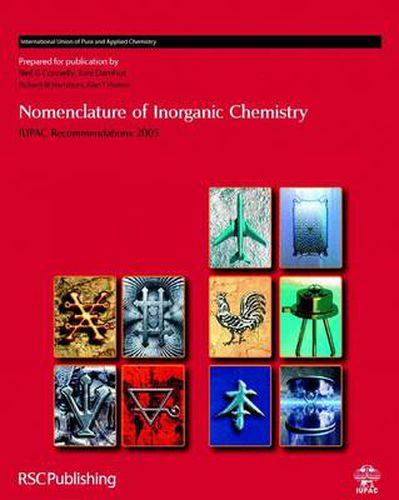Readings Newsletter
Become a Readings Member to make your shopping experience even easier.
Sign in or sign up for free!
You’re not far away from qualifying for FREE standard shipping within Australia
You’ve qualified for FREE standard shipping within Australia
The cart is loading…






The Rules of Inorganic Nomenclature (the ‘Red Book’), first published in 1958 by the International Union of Pure and Applied Chemistry (IUPAC), was most recently updated as Nomenclature of Inorganic Chemistry 1990. This new edition of the Red Book clarifies and updates recommendations concerning the names and formulae of inorganic compounds and reflects major recent developments in inorganic chemistry. Moreover, it presents recommendations fully consistent with the principles of the nomenclature of organic chemistry. In order to choose the most appropriate of the various nomenclature systems described, a flowchart is provided to guide the reader to a section or chapter where rules can be found for a particular type of compound or species. Copious examples are supplemented by an extensive subject index. Nomenclature of Inorganic Chemistry: Recommendations 2005 is the definitive guide for scientists working in academia or industry, for scientific publishers of books, journals and databases, and for organisations requiring internationally approved nomenclature in a legal or regulatory environment.
$9.00 standard shipping within Australia
FREE standard shipping within Australia for orders over $100.00
Express & International shipping calculated at checkout
The Rules of Inorganic Nomenclature (the ‘Red Book’), first published in 1958 by the International Union of Pure and Applied Chemistry (IUPAC), was most recently updated as Nomenclature of Inorganic Chemistry 1990. This new edition of the Red Book clarifies and updates recommendations concerning the names and formulae of inorganic compounds and reflects major recent developments in inorganic chemistry. Moreover, it presents recommendations fully consistent with the principles of the nomenclature of organic chemistry. In order to choose the most appropriate of the various nomenclature systems described, a flowchart is provided to guide the reader to a section or chapter where rules can be found for a particular type of compound or species. Copious examples are supplemented by an extensive subject index. Nomenclature of Inorganic Chemistry: Recommendations 2005 is the definitive guide for scientists working in academia or industry, for scientific publishers of books, journals and databases, and for organisations requiring internationally approved nomenclature in a legal or regulatory environment.